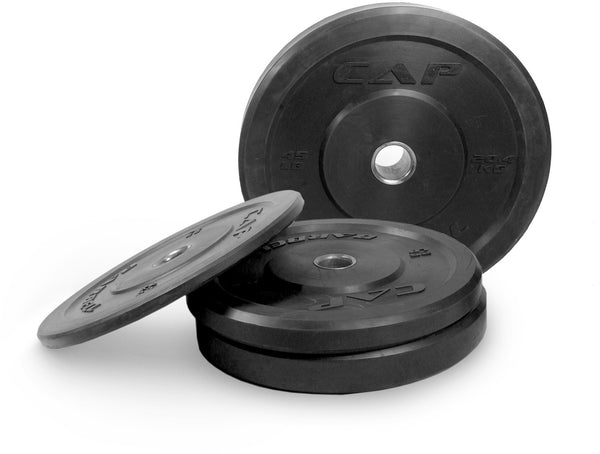Your Cart is Empty
June 23, 2023 3 min read
Bumper plates are an essential piece of equipment for any weight training routine. They help you perform a variety of exercises with increased safety, accuracy and efficiency. Bumper plates are made from a hard rubber material and are designed to be dropped from a height without causing damage to the floor or other equipment. The plates come in a variety of weights and sizes, making them ideal for both beginner and experienced lifters.
Shop The Collection: Bumper PlatesWeight training can be dangerous if not performed correctly. By using bumper plates, you can eliminate a lot of the risk associated with lifting heavy weights. The rubber plates absorb the impact when dropped, protecting the floor and other equipment from damage. Using bumper plates also allows you to lift heavier weights than you would otherwise be able to safely do so.
 Shop The Gear: CAP Barbell Olympic Bumper Weight Plates, from $13.99 USD
Shop The Gear: CAP Barbell Olympic Bumper Weight Plates, from $13.99 USD
In this article, we'll take a look at the pros and cons of using bumper plates for weight training. We'll explore the benefits and drawbacks of using these valuable pieces of equipment, as well as how they can help you reach your fitness goals.
There are many benefits to using bumper plates for weight training. These include:
Despite the many benefits of using bumper plates, there are some drawbacks that should be considered before investing in them. These include:
Bumper plates are an invaluable piece of weight training equipment. They offer numerous benefits, including increased safety, improved performance, more variety and enhanced durability. However, there are also some drawbacks to consider, such as a limited weight range, bulky size, noise and their inability to handle extremely heavy weights. Ultimately, whether or not bumper plates are the right choice for you will depend on your individual needs and goals.
Shipping Protection gives you peace of mind while saving you time and money.
Shipping Protection provides coverage for eligible orders that are lost or damaged in transit, or stolen after delivery has been confirmed by the carrier. MAGMA Fitness, through its partners, administers the protection program and may receive compensation for these services. Coverage is subject to the terms, conditions, and exclusions outlined in our Shipping Protection Terms & Conditions.